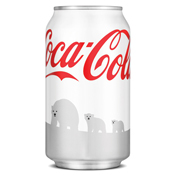Steven’s post from last week calls attention to The Body Shop, a business which is especially interesting to examine not only in light of what we’ve learned about corporate social responsibility and traditional entrepreneurship, but also in light of our class today about social entrepreneurship.
Steven highlights the ways in which The Body Shop’s founder, Anita Roddick, was an entrepreneur, but in ways that remind me of the social enterprises we discussed today. Although The Body Shop certainly is an entrepreneurial venture, it likes to strongly emphasize its CSR to the extent that, as I found while perusing its website, it sometimes almost portrays itself as a social enterprise. The website quotes Roddick, “The business of business should not just be about money, it should be about responsibility. It should be about public good, not private greed.” Notably, she calls for “public good” as business’s goal instead of “private greed,” thus seeming to place greater importance on societal change than on maximizing profit. Were this The Body Shop’s mission statement, The Body Shop might be classified as a social enterprise rather than a traditional business, making the company an intriguing one to consider when thinking about the definitions of traditional and social entrepreneurship.


